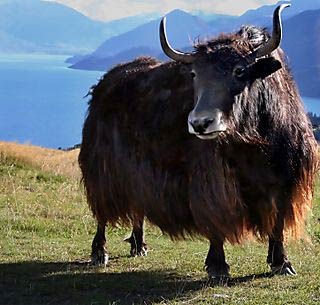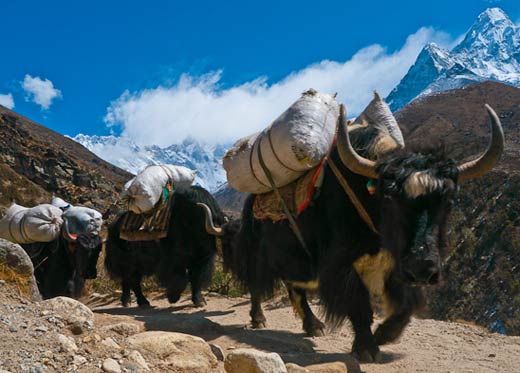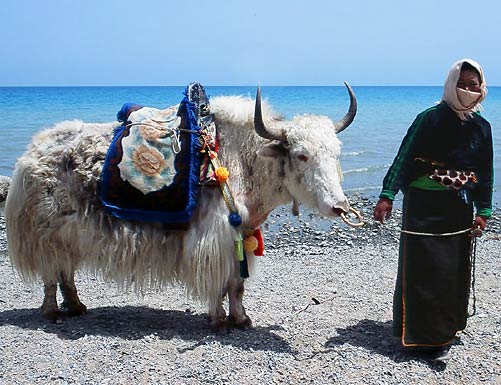Yak – Handsome, Long-haired, Himalayan Bovine

The Yak is found primarily in south Central Asia, Mongolia, and Russia. At adult age, it stands at roughly 6 ft (2 m) tall, and can weigh up to 2,200 lb (1,000 kg). Its shaggy coat can be brown or black; although there are some gold-coated Himalayan yaks, this is exceedingly rare. Both sexes of this creature boast a pair of tall, sharp horns on their heads. The male’s horns can grow to lengths of up to 3.4 ft (1.04 m). The female’s horns are naturally somewhat shorter; these are used for digging under ice and snow. The yak’s diet consists mainly of lichens, mosses, and various other grasses. It has four stomachs to aid in digestion and cud-chewing, as well as keeping them warm.

Because of the habitat in which the yaks live, it can be difficult to find adequate vegetation to feed on; thus, the yak commonly has to travel very far due to the changing climate. In the temperate spring, the yak travels to lower ground for lush mosses and other vegetation. Soon after, as the summer gets unbearably hot, the yak must travel up the mountains once again, seeking cooler temperatures.
Don’t be fooled; the Himalayan yak is no pushover. While extremely sensitive to high heat, they are exceptionally hardy in the cold, and can withstand temperatures as low as -40°F/C. This is due to a special fluid excreted in the yak’s sweat. This fluid matts their dense hair together tightly, giving the yak a very effective layer of extra insulation. In addition, this creature is an excellent mountain climber, though its bulkiness may make it seem otherwise; their split hooves give them extra footing on rocky terrain.

For centuries, yaks have been useful as domesticated animals, as well. More docile than its wild counterpart, the domesticated yak performs many essential daily tasks for humans, such as moving cargo. In Tibet, it is not uncommon to encounter yak’s milk or meat for sale, and the wool makes very warm and comfortable clothing. Even its dried dung has its uses; as a fuel source for those living in the Tibetan plateaus.
